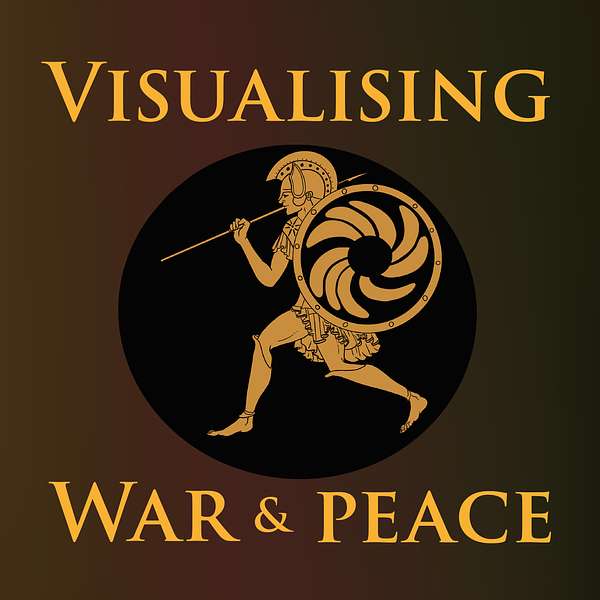
Visualising War and Peace
How do war stories work? And what do they do to us? Join University of St Andrews historian Alice König and colleagues as they explore how war and peace get presented in art, text, film and music. With the help of expert guests, they unpick conflict stories from all sorts of different periods and places. And they ask how the tales we tell and the pictures we paint of peace and war influence us as individuals and shape the societies we live in.
Visualising War and Peace
5 Soldiers on Stage with dancer and choreographer Rosie Kay
In this week's episode, Alice and Nicolas interview dancer and choreographer Rosie Kay. Rosie began dancing at the age of three, founding the Rosie Kay Dance Company in 2004. With multiple award winning shows to her name, Rosie suffered a serious knee injury in 2006, and this got her thinking about other jobs which involve bodily risk. She ended up embedding with an infantry battalion to research the risks that soldiers take, and this led to her development of the dance show 5 Soldiers: the Body is the Frontline, which has since toured the UK to critical acclaim.
5 Soldiers is an incredible piece of physical theatre which captures the experiences of one woman and four men as they train, prepare for war and eventually deploy to Afghanistan. It gives audiences a glimpse of modern military culture, of how women fare in the army, and of what it is like to be at war, both mentally and physically. Focused on bodily experiences in particular, it visualises war in really powerful and thought-provoking ways, so we were excited to ask Rosie how it came about, what she was trying to communicate with it, and how it has impacted on audience's perceptions of soldiering and warfare.
Among other questions, we asked Rosie:
- What can dance as a form of storytelling bring to representations of war?
- How did her experience of embedding with an infantry battalion shape her understanding of soldiering and combat, and how did it influence the way she decided to represent war on stage?
- Why did she decide to focus attention on the human body, as the frontline of military conflict?
- What did she want to communicate to audiences about the emotional side of soldiering?
- What does 5 Soldiers reveal about gender dynamics in the military?
- How have audiences reacted, and how might watching 5 Soldiers influence people's habits of visualising war?
We hope you enjoy the episode!
For a version of our podcast with close captions, please use this link. You can find out more about 5 Soldiers, an expanded version of the show called 10 Soldiers, and the Rosie Kay Dance Company on their website. A recorded performance of 5 Soldiers can be viewed here.
For more information about individuals and their projects, access to resources and more, please have a look on the University of St Andrews Visualising War website.
Music composed by Jonathan Young
Sound mixing by Zofia Guertin